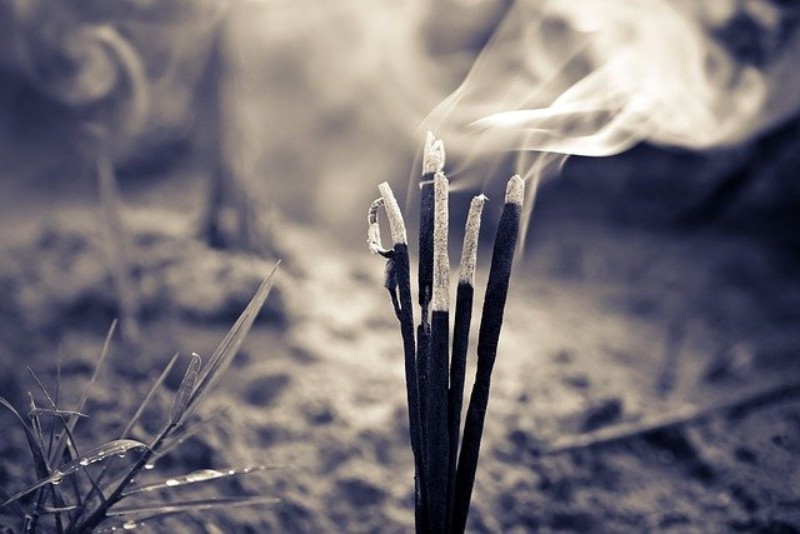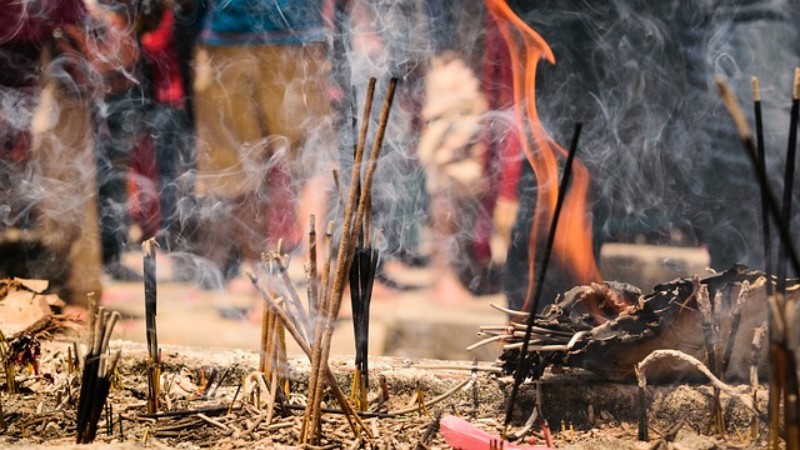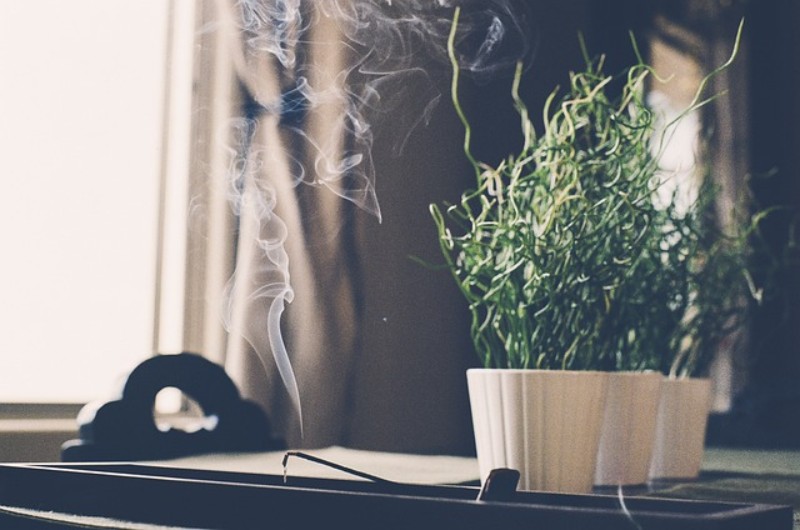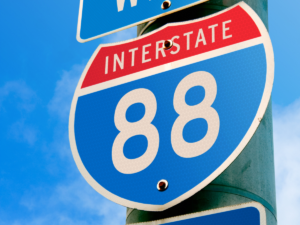Last Updated on September 5, 2024
Many cultures have used burning incense throughout history, and the patterns that the smoke creates are often believed to have symbolic meaning.
While interpreting these patterns varies from culture to culture, it is interesting to learn about the different perceptions and their meaning.
In divination and spiritual practices, black smoke is often seen as a symbol of negativity, unresolved energy, and potential bad omens. Paying attention to the presence of black smoke during rituals can indicate issues to address or negative energies at play.
Uncover the secrets of mysterious incense smoke patterns. Dive into this article and explore the following;
what is incense,
the incense history,
importance of incense smoke patterns in various cultures and traditions,
different incense smoke patterns and their meanings,
factors that can affect the patterns of incense smoke,
incense smoke as a divination tool,
and incense smoke and its effects on energy and mood.
What Is Incense

Incense is an ancient yet powerful tool that helps bridge the gap between our material and the spiritual realm.
It is an organic, scented material used for millennia in religious rituals and ceremonies.
Incense is created using various fragrant substances, like herbs and aromatic woods, which are heated to release their pungent aromas, and smoke rises into the air.
These fragrances are believed to act as powerful agents of purification and protection from negative energy.
Furthermore, incense smoke has three colors such as;
White incense smoke is often purifying or cleaning a room or space.
Black incense smoke is often used to evoke a feeling of strength, protection, and stability.
Gray incense smoke has many different connotations. It can represent a neutral force, helping to balance out both positive and negative energies.
History Of Incense Use

Incense has been used in ancient times by different cultures around the world, primarily for spiritual purposes and divination methods. Incense use is a very common practice believed to have begun thousands of years ago, most likely originating in Ancient Egypt.
It was used in various religious and spiritual ceremonies like those observed by Hindus and Buddhists. During these times, incense is used to connect with divine beings or call on higher energies for support.
The mystical and spiritual properties of ‘holy wood,’ particularly Palo Santo, have been revered since the Incan era. South American healers believe that this wood embodies a spirit that aids in physical and energetic healing.
Through trade routes of the time, incense eventually spread throughout the Middle East, Europe, and East Asia before being adopted by countless cultures around the world.
Even today, its use continues in many religious ceremonies and rituals worldwide. It is also still used in various traditions to bring positive energy while cleansing away unwanted negative energies.
Importance Of Incense Smoke Patterns in Various Cultures and Traditions

Incense has been used for centuries and across many cultures and traditions to create a specific atmosphere or mood.
Using authentic Palo Santo wood is crucial for creating meaningful smoke patterns, as synthetic versions can produce different aromas and smoke characteristics. Real Palo Santo wood ensures the traditional and healthful benefits associated with its use.
Through the burning of incense, unique smoke patterns are created that have distinct meanings and interpretations in different traditions and cultures such as;
Buddhist monks often use incense during meditation practices to create elaborate geometric shapes representing mandalas or lotus flowers.
In Hinduism, circles of smoke from burning incense represent cycles and eternity since they have no beginning or end point when observed from above or below.
In China, too, particular shapes have specific meanings when created by blowing on burning incense sticks – such as rings representing unity or spirals representing longevity – making them a popular element in traditional Chinese weddings and celebrations.
In Japan, Kōdō (the art of appreciating incense) is practiced by connoisseurs who carefully observe each scent’s unique aroma before rating them according to their complexity and intensity of smell.
It is also believed that rising smoke from the incense burning is a spiritual meaning that prayers are carried to heaven or enlightenment is released from within oneself.
From communicating messages beyond this physical realm to protecting from negative influences, each culture emphasizes these patterns and how they can be used in daily life.
The use of incense is one of the most ancient practices in history. Its purpose has changed over time, but it’s still a common feature in many cultures. The way incense smoke moves through the air can tell us entirely about the meaning of incense smoke.
Several patterns can be seen to read incense smoke when it is released into the air, each with its meaning and significance.
Here are the incense smoke pattern meanings.
Straight, Vertical Smoke: Clear Communication and Clarity of Thought

Straight, vertical incense smoke meaning are clear communication, clarity of thought, and a focus on positive energy. This kind of smoke pattern suggests that you are emotionally balanced and that your thoughts are clear. In contrast, light smoke is associated with subtle feelings and emotions, indicating a more nuanced emotional state.
If this is the kind of smoke pattern you see when you burn incense, it is likely indicative of a very positive emotional state.
It also indicates that the gods have heard and understood the prayers and answered them positively.
Curling, Spiraling Smoke: Creative Thinking and Problem-Solving

Curling, spiraling, or incense smoke swirling pattern indicates creative thinking and problem-solving. It suggests that you have strong mental capacities and intuitive intelligence.
This pattern suggests that ideas and solutions are generated to overcome obstacles or solve complex problems. It’s a sign that innovative thinking will help lead to success.
It also indicates that new ideas can easily and comfortably explore in the current environment.
The phenomenon of ‘smoke splits,’ where smoke divides into two, signifies a critical turning point in an individual’s life. This event is seen as a message from the universe, indicating that choices made at this time will greatly influence one’s future.
When this type of smoke pattern forms from your incense burnings, it may tell you to trust your intuition and embrace new ideas or concepts.
Flickering Smoke: Emotional Turmoil or Instability

Flickering incense smoke has been thought to reflect emotional turmoil or instability experienced by the person who lit the incense.
Small details in the smoky signals are often harbingers of insights indicative of changes in attitude, cognitive perspectives, and even future events.
Burning Palo Santo wood can ward off evil spirits and clear negative energy, enhancing peace and balance in the environment.
These work together to signify a past event or symbolic conversation running through the reader’s spirit without resolution, alerting them to pay attention to unaddressed emotions and heal them using techniques such as meditation or prayer.
It also suggests that some unresolved issues or conflicts need to be addressed. This type of smoke pattern encourages us to take a step back and reevaluate our emotions before making any decisions.
Thick, Dense Smoke: Obstacles or Negativity Present

Thick, dense smoke indicates a bad omen, such as an obstacle or negativity in your life. Palo santo wood, known for its unique properties in clearing negative energy, can be particularly effective in such situations. It could mean an issue blocking progress or that unresolved conflicts must be addressed for things to move forward again.
When this kind of smoke appears in your incense burnings, it is essential to take time for self-care and reflection to avoid becoming overwhelmed by negativity.
Thin Wispy Smoke: Negative Energy Dissipating

When incense smoke forms a thin wispy smoke, it’s a good sign that signifies negative energy dissipating away from us, allowing us to see things more clearly from a different perspective.
It implies hope for change or progress if we stay open-minded about potential solutions or ideas presented during these times when thin wispy, incense smoke appears during our burnings.
This thin stream of incense smoke dispersing represents moving away from the dark energy and finding a path toward harmony and enlightenment.
Factors That Can Affect Incense Smoke Patterns
Incense smoke is an integral part of many religious and spiritual ceremonies and a source of relaxation or meditation for many. But what factors affect the patterns that incense smoke takes when it rises into the air?
The sustainable harvesting of palo santo trees is crucial, particularly focusing on sourcing from fallen trees rather than cutting them down. It’s important to distinguish between the two species, especially Bursera graveolens, which is not considered endangered.
Here are the two primary factors.
Type Of Incense Used
The type of incense used is one of the most significant factors determining smoke patterns.
Different types of incense can produce vastly different patterns, some thick and hazy clouds while others give off thinner trails and smoke clots.
It is important to identify authentic palo santo sticks, as synthetic versions can have different aromas and pose health risks. Genuine palo santo sticks produce a distinct aroma and are safer to burn.
The type of incense you choose determines the shape and concentration of burning smoke, such as;
incense sticks will produce thin, vertical lines,
cones tend to create enormous, thicker plumes that quickly disperse.
burning palo santo versus sandalwood will produce two very different smoke patterns as those substances have other natural properties when burned.
The ingredients within the incense itself and how much heat it takes to vaporize it properly can also affect the incense smoke pattern.
For example, solid-granulated incenses usually result in upward-rising smoke since they contain more essential oils with finer particles than the stick or cone varieties.
Choosing the correct type of incense depends on what kind of pattern you are trying to achieve.
The Burn Rate and Quality of Incense
The burn rate refers to how quickly or slowly the incense produces a fragrant smoke.
High-quality incense sticks maintain an even burn throughout their length, meaning that their aromatic and consistent smoke flow follows a uniform pattern as it disperses into the air.
Low-quality incense may start with a slow burn but increase in speed further down its length, causing uneven smoke patterns.
Environmental Factors Such as Airflow and Temperature
Environmental factors such as airflow and temperature can also influence how an incense’s smoke pattern disperses into the air.
If there is little airflow around the area where you are burning your incense, it may take longer for its plume to dissipate; conversely, if there is a strong breeze, it will be carried away faster than usual.
Temperature also influences how quickly an incense’s plume dissipates; hotter temperatures cause quicker dissipation, while cooler temperatures slow down dissipation rates significantly.
Incense Smoke as A Divination Tool
Incense smoke has long been a tool for divination or spiritual practices to gain insight into the future. Let’s look at how this practice has been used either for traditional or modern use as a divination tool.
In particular, black smoke is often seen as a symbol of negativity, unresolved energy, and potential bad omens. It is important to pay attention to the presence of black smoke during rituals, as it may suggest that there are issues to address or negative energies at play.
Traditional methods of using incense smoke for divination
Incense smoke has been used in many traditional cultures to divine the future or to receive spiritual guidance from deities or ancestors.
This practice involves burning one’s chosen incense blend while focusing on a question or intention. The smoke is believed to carry one’s prayers upward into the heavens and brings down answers from on high.
The shape of the smoke can provide clues about what the spirits are communicating. Still, it is also important to “listen” with one’s heart and intuition to access a more profound understanding.
Modern techniques for using incense smoke for guidance and self-reflection
In our modern age, many people still turn to incense smoke to connect with their spirit guides and seek inner wisdom.
Instead of relying solely on external forces such as gods or ancestors, some practitioners prefer incense smoke as a tool for self-reflection.
By tuning in within themselves and allowing their intuition to lead them forward, many have found that they can tap into their inner wisdom more deeply when using incense smoke as a guide.
Incense Smoke and Its Effects on Energy and Mood
Many people around the world use incense as a way to create a more peaceful atmosphere. But many may need to realize that burning incense can have powerful effects on our energy and mood.
Palo santo wood, known for its healing benefits, is particularly effective in clearing negative energy and enhancing relaxation through its essential oils.
Incense Smoke’s Ability to Purify and Cleanse Energy
The smoke in incense burning has the power to purify and cleanse energy. Burning specific herbs, such as sage, can help clear out negative or stagnant energy in your entire room or space.
You may have noticed that burning sage produces an earthy aroma that dissipates quickly after the incense is extinguished. This scent helps to neutralize any negative vibes or energy in your home or office.
Not only does this make for a pleasant-smelling area, but it also helps you feel more relaxed and energized during stressful times.
Incense Smoke’s Ability to Alter Mood and Create a Peaceful Atmosphere
In addition to its purifying powers, incense smoke can alter mood and create a tranquil atmosphere.
Burning certain herbs can help reduce anxiety and stress levels and can even provide relief from depression symptoms.
Certain types of incense are known to have calming effects on those who take part in burning it – think lavender, jasmine, sandalwood, and chamomile – while others are known to uplift moods – think orange blossom or lemon balm.
These aromas are often used in meditation rituals as they encourage relaxation while still allowing us to stay focused on our intentions or goals.
Conclusion
Understanding how to interpret incense smoke pattern meaning and how the smoke behaves is essential for gaining wisdom about your spiritual world and managing positive and negative energy levels.
When burning incense, pay close attention to certain signs in reading smoke patterns to gain more answers and insight into yourself and the situations around you. And therefore, you can have an open mind to make more informed decisions when faced with difficult choices.
Additionally, by being aware of these signs while burning incense during rituals or ceremonies, you’re prepared to handle any challenging energies that may arise during such practices.



